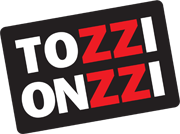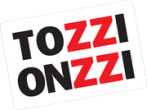Several applications hosted as SaaS are quite popular in sectors relating to health care, email and collaboration, etc. The cloud offers both business advantage and huge monetary benefit as the service offers computing, storage and applications as a service. For example, PaaS provides the tools to build a payroll app customized to an organization’s needs, and it would be considered SaaS upon finishing. However, a ready-made SaaS product like QuickBooks could be a better option.
- A PaaS, or platform as a service, provides developers with a framework they can use to build custom applications.
- You can access all three via internet browser or online apps available on different devices.
- IaaS works primarily with cloud-based and pay-as-you-go services such as storage, networking and virtualization.
- Customers can provision, configure and operate the servers and infrastructure resources via a graphical dashboard, or programmatically through application programming interfaces (APIs).
PaaS is particularly beneficial if you need to create customized applications. IBM has a broad menu of IaaS, PaaS and SaaS offerings to meet your company’s needs up and down the stack. IBM’s rich and scalable PaaS solutions help organizations develop cloud native applications from scratch, or modernize existing applications to benefit from the flexibility and scalability of the cloud. IBM also offers a full IaaS layer of virtualized compute, network, and storage within our full-stack cloud platform, and more than 150 SaaS business applications to help you innovate. In essence, PaaS is focused on full-cycle automation and composable services for rapid application development.
IaaS: Infrastructure as a service
IaaS providers manage their customers’ data on physical servers across the world. Since most software and platform providers now run on a cloud-computing model, it’s challenging to find active examples of on-premises software. One example would be Adobe Photoshop Elements because, while you can still install it via the cloud, you can buy a license in CD-ROM format and install it locally. If you want to create your own applications for your business, then PaaS platforms are the best option. Google Workspace — formerly known as Google G Suite — is one of the most popular SaaS-based infrastructure services. The upgrade from G Suite came as a result of a more integrated experience across Google’s broader suite, which allowed its customers to better connect with their various tools.
PaaS is primarily used by developers who are building software or applications. Merchants are able to pay for a hosting plan that meets their own needs without the cost of maintaining their own physical servers. The merchant is still responsible for installing and managing updates to their Magento software. With the increased popularity of cloud computing and services, businesses across the globe are moving away from the traditional on-premise services that they have come to rely on. With Red Hat OpenShift on IBM Cloud, OpenShift developers have a fast and secure way to containerize and deploy enterprise workloads in Kubernetes clusters.
Customers can provision, configure, and use the IT infrastructure similarly to on-premises hardware. The PaaS platform can run any type of app—web, mobile, IoT (Internet of Things), or API (Application Programming Interface)—and many PaaS services have a pay-as-you-go pricing structure. That allows apps built with PaaS technology to start small and invest in more resources as they scale up to take on enterprise-level demand. With a software-as-a-service product, you are getting the most service from your third-party provider in terms of software management and maintenance. With infrastructure-as-a-service on the other hand, the provider only supplies and maintains core components such as servers or storage.
When to use PaaS?
Veritas helps organizations of different sizes manage and protect their business-critical data. It offers an integrated product portfolio providing unified data management to deliver unmatched performance and versatility with top-tier supervision in the cloud. As organizations map their path to the cloud, the essential decisions revolve around how much they can and want to manage IT assets on-premises and how much they want a service provider to manage. PaaS is primarily useful for programmers and developers and allows users to develop, run, and manage applications without maintaining the underlying infrastructure. The trend shows that there is a slight decrease in SaaS, and a slight increase in IaaS and PaaS, which is likely to continue over the next years.
In her spare time, she enjoys digital painting, reading, and being a pet mom to her fluffy brood of three. We’ll also help you understand the key differences among SaaS, PaaS, and IaaS—so you can best choose one for your organization. Every type of cloud-computing is different and has pros and cons that vary from the rest.
SaaS
And once you’ve made a decision, you need to find the right vendor that goes with your organization’s culture and ultimately helps increase your teams’ productivity and efficiency. Below, you can see how the public cloud computing market share has developed over the course of three years as well as its projection for 2022. The leading service in the cloud computing industry is SaaS with a 39.4% cloud computing market share in 2021, followed by the fastest-growing cloud service IaaS with 20.9%, and PaaS with 18.7%. These entire cloud application services are the most common form of cloud computing.
By using that data generated over the cloud, businesses can innovate faster, deepen their customer relationships, and sustain the sale beyond the initial product purchase. One term you’re likely seeing more frequently in the world is XaaS, short for Everything as a Service. SaaS provides numerous advantages to employees and companies by greatly reducing the time and money spent on tedious tasks such https://www.globalcloudteam.com/ as installing, managing, and upgrading software. This frees up plenty of time for technical staff to spend on more pressing matters and issues within the organization. Developers use PaaS because it’s cost-effective and allows for easy collaboration for an entire team. Consider building an app on your local drive, then trying to deploy it online — that’s difficult or might take too many steps.
With SaaS, you don’t need to worry about installing or downloading although some applications might require a plug-in. Therefore, since the provider does that already, organizations don’t have to update or maintain their on-premises datacenters. Instead, they access and control the infrastructure through a dashboard or application programming interface (API). As you can tell, each cloud computing model is appropriate for different businesses and business needs. And since each model has its pros and cons, it’s important to know what is more valuable to you and your company – control, customization, or convenience.
IaaS, PaaS and SaaS are the three most popular types of cloud service offerings. They are sometimes referred to as cloud service models or cloud computing service models. An enterprise application platform with a unified set of tested services for bringing apps to market on your choice of infrastructure. Arun is Head of Products, Container & Cloud Performance Monitoring at eG Innovations. Over a 20+ year career, Arun has worked in roles including development, architecture and ops across multiple verticals such as banking, e-commerce and telco. An early adopter of APM products since the mid 2000s, his focus has predominantly been on performance tuning and monitoring of large-scale distributed applications.
It allows organizations to purchase resources like networking and storage on-demand instead of having to buy costly hardware. IaaS is highly scalable and offers businesses more flexibility than on-premise solutions. Which model is best for your business highly depends on what you are trying to achieve. If you need a maximum amount of control within the cloud environment and want to avoid external management data issues that could compromise the functionality or security of your data, IaaS is the best option.
IaaS is highly scalable and offers businesses more flexibility than on-premise solutions. The virtualized components available through the internet are equivalent to the servers and hardware companies would traditionally store in their building. It’s a pay-as-you-go service from a third party that provides customers with infrastructure services such as storage and virtualization, as they need them, via the cloud and through the internet. As the user, an organization is responsible for the data, applications, operating system, runtimes, and middleware, while the provider gives access to its servers, virtualization, storage, and network.
With this service, the end user can develop their projects without having a local infrastructure. PaaS (Platform as a Service) refers to the development and delivery of hardware and software tools over the internet, usually with the intention of supporting application development. Certain service providers specifically specialize in catering exclusively to enterprises. Through a network the enterprise cloud delivers the necessary platform, software or the required infrastructure services. The cloud services enable organisations to operate and use the computing services in a secured and controlled manner as the cloud infrastructures make use of a fire wall.
Obviously, the as-a-service solution a customer chooses depends first on the functionality the customer requires, and the expertise it has on staff. For example, an organization without the in-house IT expertise for configuring and operating remote servers isn’t well matched to IaaS; an organization without a development team has no need for PaaS. What SaaS saves you in time and maintenance, however, it could cost you in control, security, and performance, so it’s important to choose a provider you can trust. Software updates, bug fixes, and general software maintenance are handled by the provider and the user connects to the app via a dashboard or API.

